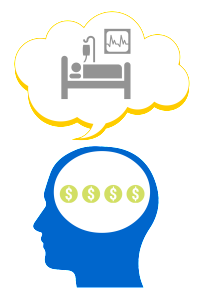 Through our RFID business we have a fairly large well-established network of partners. Most of these partners are small to medium systems integrators…exactly the type of companies that are in an excellent position to do well when IoT technologies and application development practices start catching on in the enterprise. Recently IoT has been working its way into conversations with these partners, and as can be expected, the primary question is “is anyone really doing anything?”.
Through our RFID business we have a fairly large well-established network of partners. Most of these partners are small to medium systems integrators…exactly the type of companies that are in an excellent position to do well when IoT technologies and application development practices start catching on in the enterprise. Recently IoT has been working its way into conversations with these partners, and as can be expected, the primary question is “is anyone really doing anything?”.
The answer is yes, and they have been for some time…even before it was called IoT.
Mainspring Healthcare Solutions is a long time customer of RFID TagSource. The company has a great deal of subject matter expertise in managing specific types of healthcare assets from procurement through end-of-life (equipment, not patients). Examples include beds, IV pumps, and personal health monitors so small they can easily get caught up in bed linens. This equipment is expensive and must be properly maintained and, most importantly, be available on a moments notice to provide the highest level of patient care. Investing in a solution that can dramatically improve the process of managing and maintaining this critical equipment has provided significant benefits to Mainspring customers.
Mainspring has been using both active and passive Radio Frequency Identification Technology (RFID) technology for tracking healthcare assets for several years. With Mainspring data from RFID readers is transmitted to a hosted application that provides near real-time visibility of critical assets throughout a healthcare network. The real value of this system lies in its ability to rapidly combine asset location information and operational status driven by business rules that turn data into actionable information that is embraced by end users.
The infrastructure required for the Mainspring system is fairly typical of traditional asset management solutions that use RFID. All of the assets are tagged and a reader infrastructure is installed to track the equipment as it moves throughout the facility. The bulk of the processing is handled by a cloud based application and the user interface is an IOS application running on an iPod Touch. A subset of the users also have a handheld RFID reader that communicates with the IOS applications via a bluetooth connection. The solution is elegant in its simplicity and uses “cool” tech that makes people want to use the system.
With the Mainspring solution in place healthcare workers place requests for equipment through the IOS application. This request is processed and transmitted to the equipment management group whose team is also equipped with IOS devices to respond to the request. After the equipment has been used it is placed in a room near the point of care designated for equipment that needs to be decontaminated. The asset ID information stored in the RFID tags on the assets is then read by readers installed in these rooms and transmitted to the equipment management group. These individuals can now efficiently gather these assets as they make their rounds through the hospital and return them to the decontamination area. The decontamination room also has RFID readers that support a “Check in/out” process to make sure the equipment is properly cleaned before being transferred to the clean inventory. Once the equipment is in clean inventory it can be put back in services or removed from circulation for maintenance. Once it is released back into circulation the process begins all over again.
RFID industry proponents might suggest this is an RFID solution; it’s not. RFID is an enabling technology; it is not a “solution”. While the mobile application component is a big part of the overall solution it is dependent on back-end systems and could easily be transferred to another platform. The core Mainspring applications are designed to run in a hosted environment but it could also be installed on premise so it is not a “cloud” solution. What Mainspring delivers to their customers is a medical equipment asset utilization solution that leverages Internet of Things technologies including RFID tags and IOS devices hosted in a cloud environment that has proven to address an identified need in the healthcare industry. As time goes on any one of the enabling technologies, RFID, Mobile, or Cloud, could be swapped out without having a significant impact on the overall value of this solution. Furthermore, the system can be remotely monitored and easily updated to support added features. To me that is a true internet of things application.
So, the next time you are speaking with someone about IoT and they ask “is anyone doing anything?” don’t get tied up in technical jargon about the latest standards and specifications…just point them here.